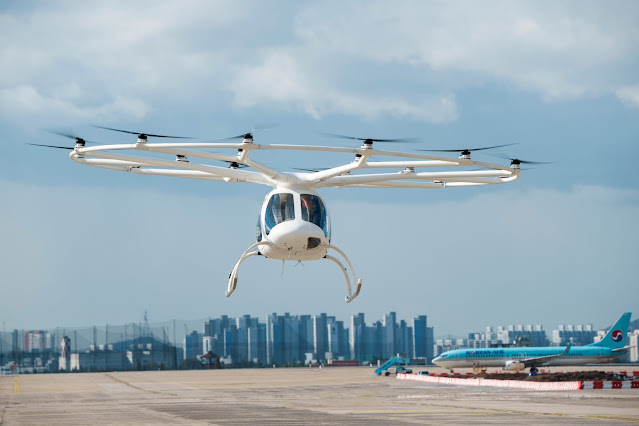
Air taxis, once a concept confined to the realm of science
fiction, are now becoming a reality in countries around the world. These
innovative vehicles combine the convenience of a taxi with the speed and
flexibility of an aircraft, promising to revolutionize the way we travel. In
this blog post, we will explore the efforts made by various countries to
implement and embrace this futuristic transportation technology.
1. Israel
Israel is leading the way in the implementation of air
taxis. Recently, the Israeli government has approved trials of air taxis in the
country, and numerous companies have sprung up to provide these services. The
goal is to alleviate traffic congestion and provide more efficient
transportation by rapidly transporting people through the air. Companies like
Urban Aeronautics and EVTOL are in the lead of such efforts, with Urban
Aeronautics developing a compact version of its Cormorant unmanned vehicle that
can carry up to two people, while EVTOL is partnering with Boeing to develop
their air taxis. By embracing air taxis, Israel holds the potential to
significantly enhance urban mobility and revolutionize the way people commute.
2. United States
The United States has been at the forefront of the air taxi
revolution. Major industry players like Uber, Boeing, and Airbus have invested
heavily in developing electric vertical takeoff and landing (eVTOL) aircraft
for urban air mobility. The Federal Aviation Administration (FAA) has already
started working on regulations and certifications for this new mode of
transportation. Several cities, including Dallas, Los Angeles, and New York,
have been selected as testbeds for air taxi operations, showcasing the
commitment of the country to embrace this transformative technology.
3. Germany
Germany has also been actively exploring the potential of
air taxis. The country boasts a robust aviation industry and is home to
companies like Volocopter and Lilium, both leading the charge in developing
electric air taxis. The German government has been supportive, providing funds
for research and development in this field. Furthermore, the city of Hamburg
has implemented a pilot project to test the feasibility of air taxis for
improving urban mobility. These initiatives demonstrate Germany's determination
to be at the forefront of cutting-edge transportation solutions.
4. United Arab Emirates
The United Arab Emirates (UAE) is no stranger to embracing
futuristic technologies, and air taxis are no exception. Dubai, in particular,
is renowned for its forward-thinking approach to transportation. The city aims
to have autonomous air taxis carrying passengers through its airspace by 2030.
The Roads and Transportation Authority (RTA) of Dubai has partnered with
companies like Uber and Volocopter to conduct test flights and explore the
implementation of air taxis. With its progressive mindset, the UAE is
positioning itself as a leader in air mobility.
5. Singapore
Singapore, known for its efficient transportation systems,
is also actively pursuing air taxi initiatives. The government has been working
with various companies, including Airbus and Volocopter, to conduct feasibility
studies and trials of air taxis. Singapore's dense urban environment makes it
an ideal location to explore the benefits of air mobility in reducing
congestion and improving connectivity. The country's commitment to implementing
air taxis reflects its relentless pursuit of smart city solutions for the
future.
Conclusion
As countries worldwide strive for smarter and more efficient
transportation solutions, air taxis have emerged as a promising mode of travel.
With major players investing heavily in research and development, and
governments actively supporting and regulating this technology, the vision of
flying vehicles ferrying passengers through the skies is becoming a reality.
The implementation of air taxis holds the promise of transforming urban
mobility, easing traffic congestion, and reducing emissions. While there are
still technical and regulatory challenges to overcome, it is clear that
countries around the world are embracing this transportation revolution. The
rise of air taxis is an exciting glimpse into the future of transportation, and
we can't wait to see where it takes us.
Comments
Post a Comment